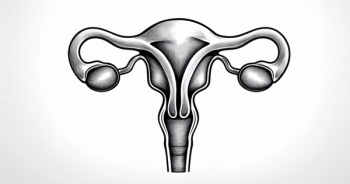
Cervical Cancer: Classification, Staging, and Prevention
An expert gynecologic oncologist reviews the biology of cervical cancer and discusses how HPV vaccination is increasingly playing a role in prevention.
Episodes in this series

Case: A 50-Year-Old Woman With Cervical Cancer
Initial Presentation
- 50-year-old, black woman busy with family – teenage/college kids; FT work outside the home; now helping parents as mom is recovering from a knee replacement
- Last cervical cytology and HPV testing – 6 years ago; GYN doctor retired 2 years ago; not connected with new gynecologist.
- Complains of pelvic pain during intercourse, vaginal bleeding post-intercourse
- Pelvic MRI with contrast: involvement of lower vagina, pelvic sidewall, pelvic lymph node positive
- Neck/chest/abdomen/pelvis/groin FDG-PET/CT: liver metastasis
- Clinical Staging: Stage IVB
- IHC molecular testing results: PD-L1 positive, CPS >1
- Received pembrolizumab + cisplatin/paclitaxel + bevacizumab first line for 6 cycles; 6 additional cycles with pembrolizumab + bevacizumab. The patient had a complete response and opted to d/c maintenance treatment.
Follow-Up
- 11 months later the patient presented with complaint of cough.
- MRI: Metastatic nodules in right upper lung confirmed.
Treatment for Recurrence
- Tisotumab vedotin was initiated.
Transcript:
Ritu Salani, MD: The biology of cervical cancer is complex. To simplify it, we know that there are 2 main histologies: squamous cell carcinomas, which comprises about 60% to 70% of cases, and adenocarcinomas, which arise in the canal of the cervix and account for about 20%. There are other, rarer histologies, such as adenosquamous histologies, neuroendocrine tumors, and even lymphomas or sarcomas, but those make up a much lower frequency of cervical cancer cases. Adenocarcinomas of the cervix can be harder to detect because they arise in the canal and may not be visible during speculum examination. We also know that Pap [Papanicolaou]testing may not pick up adenocarcinomas as readily because these are typically done on the face or the ectocervix. However, the addition of HPV [human papillomavirus] has a higher rate of picking up adenocarcinomas as well as squamous cell carcinomas of the cervix. There’s also a small subgroup of patients who may have HPV-negative disease, and these are typically known as gastric-type adenocarcinomas. However, there are some squamous cell carcinomas that may be HPV negative. It’s always important to be aware of these histologies as well.
Staging for cervical cancer used to be clinical. We would focus on examination, which is still a critical part of diagnosis and management of cervical cancer. But we’ve incorporated radiographic findings, predominantly lymph node positivity, which makes patients a stage III. We continue to look at the impact of the cervical cancer on the kidneys, including hydronephrosis or hydroureter. This can also upstage a patient. PET [positron emission tomography]–CT scans have revolutionized the ability to diagnose these patients accurately. Getting a full assessment of the chest, abdomen, and pelvis can be critical because patients may not have obvious signs of metastatic disease but may be found to have liver or lung metastases, which will help inform treatment.
To prevent cervical cancer, primary prevention is key. This is where the HPV vaccination has revolutionized the care of these patients. Giving the vaccination early on—in the preteen or early teenage years—is most impactful. Prevention of cervical cancer is the key, and making this accessible to all patients, both girls and boys, is really important. Recently we’ve seen outcome data from the HPV vaccination. We’ve seen data showing that patients who receive the HPV vaccination have a significant reduction in the risk of cervical cancer development, and this is important. It does not, however, eliminate the need for continued screening with Pap testing and HPV testing for these patients because some patients will develop cervical dysplasia or cervical cancer despite the vaccination.
One of the interesting things about cervical cancer is that although we know HPV can cause multiple cancers, including cancers of the head and neck, anal cancers, and vulvar cancers, cervical cancer is the only HPV-associated cancer that has screening associated with it. We’ve seen a significant reduction in HPV-positive cervical cancer cases. This is in part due to the HPV vaccination but also the continued screening that allows us to detect it in premalignant or early stages of malignancy, where our treatments are most impactful. Unfortunately, we’re seeing increases in other HPV-associated cancers, particularly in the head, neck, and anal regions. It’s important to continue to monitor patients for signs and symptoms and to do thorough examinations to detect these cancers. But the HPV vaccination should have impact on these diseases as well.
Transcript edited for clarity.











































